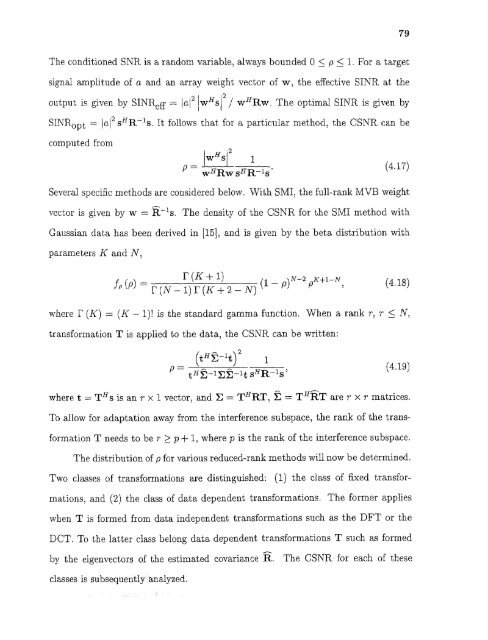Space/time/frequency methods in adaptive radar - New Jersey ...
Space/time/frequency methods in adaptive radar - New Jersey ...
Space/time/frequency methods in adaptive radar - New Jersey ...
You also want an ePaper? Increase the reach of your titles
YUMPU automatically turns print PDFs into web optimized ePapers that Google loves.
79The conditioned SNR is a random variable, always bounded 0 < p < 1. For a targetsignal amplitude of a and an array weight vector of w, the effective SINR at theThe optimal SINR is given byIt follows that for a particular method, the CSNR can becomputed from9Several specific <strong>methods</strong> are considered below. With SMI, the full-rank MVB weightvector is given by w R-ls. The density of the CSNR for the SMI method withGaussian data has been derived <strong>in</strong> [15], and is given by the beta distribution withparameters K and N,Ls the standard gamma function. When a rank r, r p 1, where p is the rank of the <strong>in</strong>terference subspace.The distribution of p for various reduced-rank <strong>methods</strong> will now be determ<strong>in</strong>ed.Two classes of transformations are dist<strong>in</strong>guished: (1) the class of fixed transformations,and (2) the class of data dependent transformations. The former applieswhen T is formed from data <strong>in</strong>dependent transformations such as the DFT or theDCT. To the latter class belong data dependent transformations T such as formedby the eigenvectors of the estimated covariance R. The CSNR for each of theseclasses is subsequently analyzed.
















